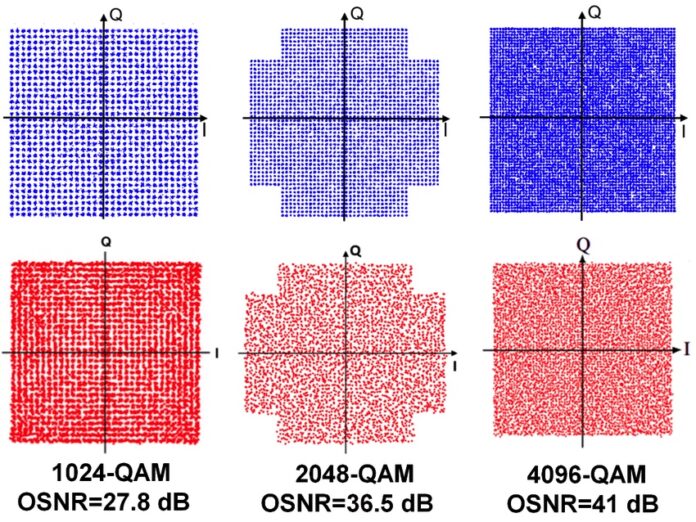‘Wi-Fi 7 breaks most testing equipment out there’: LitePoint exec
Wi-Fi 7, designed with the 6 GHz band in mind, has a host of exciting new features that promise higher spectrum and power efficiency, better interference mitigations, higher capacity density and higher cost efficiency. But many of these features are causing some hiccups in the test and measurement world. This article focuses on challenges associated with breaking the 6 GHz barrier and with testing higher modulation.
“Wi-Fi 7 is adding a bunch of tools for deployment flexibility,” LitePoint’s Director of Product Marketing Adam Smith told RCR Wireless News, but added that with flexibility, comes complexity. “That is what most people talk about in test,” he said, “What Wi-Fi 7 has done is introduce all these flexibility features, and they all have to be characterized.”
Breaking the 6 GHz barrier
Because almost all commercial wireless technologies were sub-6 GHz prior to the introduction of Wi-Fi 6E, the biggest change in the test field was breaking this 6 GHz barrier. “With the 6E requirements, this will require upgrades to cover up to at least 7.125 GHz,” said Keysight’s Senior Application Engineer Bill Koerner.
Smith agreed, commenting: “That was something, as an industry, we needed to figure out.” However, he added that at this point, that problem has been solved.
Still, though, breaking this barrier has, in some cases, led to entirely new tests. For example, to protect incumbent 6 GHz band users in the U.S. — such as satellite links, mobile TV broadcasts and utility communication links — the Federal Communications Commission (FCC) added a Contention Based Protocol (CBP) test for the 6 GHz band. CBP enables multiple users to use the same channel without pre-coordination, and now, all Wi-Fi APs and clients must be tested in this way.
“This type of Listen Before Talk [LBT] testing has been required for the EU [end user] for all frequency bands and is not new for the 6 GHz band. However, this is a relatively new approach for the FCC to focus on the receiver functionality and employ a LBT capability,” Koerner explained. “This will require a slightly different test set-up, and potentially new equipment.”
He went on to say that some of these receiver tests are more complex than others. “Notably, the Receiver Selectivity tests will require testing at more frequencies,” Koerner said.
4096-QAM
Wi-Fi 7 will support 4096-QAM or 4K QAM, which boosts the peak rates to increase throughput and capacity compared to Wi-Fi systems using 1K QAM modulation. More specifically, LitePoint claims that 4K QAM can increase the physical layer (PHY) data rate by 20% and improve modulation accuracy.
“The 802.11be standard increases the QAM modulation order to 4096 QAM to achieve the highest data rate. With a denser constellation, the transmitter modulation accuracy requirements are also increased,” LitePoint stated on its website. “The IEEE standard sets a transmitter target Error Vector Magnitude (EVM) requirement at -38 dB for 4096 QAM, increasing the performance requirement by 3 dB compared to 802.11ax [Wi-Fi 6].”
However, all experts spoken to agreed that these higher data rate modes are the biggest challenge still facing the test and measurement space. Rohde & Schwarz IoT Market Segment Manager Joerg Koepp said simply that this feature “brings the test equipment to its limits.”
To measure wireless modulation, testing companies use a metric called Error Vector Magnitude (EVM), which measures the deviation of actual transmissions from their ideal locations in the constellation diagram, capturing the sum of these imperfections to decipher a device’s transmit accuracy.
Basic signals exhibit only two phases of magnitude, which allow the transfer of either a 0 or 1, and this makes it relatively easy to tell which is which. But, as you get to higher order modulation formats, like in the case of Wi-Fi 7, it gets increasingly harder to transmit and receive data error-free. That’s because in higher-order modulation, the constellation points are more susceptible to noise and non-linearities because they are closer together, making it more difficult to assess a device’s modulation and demodulation capability.
“It’s great [that] we have all this spectrum now, but it’s higher frequency, so your signal is much more susceptible to issues in the environment,” Brian Davis, technology strategy manager at test and measurement company Anritsu. He listed several potential issues related to propagation loss, signal reflections and non-line-of-sight.
Therefore, 4096-QAM results in the need for more linear instrumentation when testing the functionality of the Wi-Fi chips. In order to know if a Wi-Fi chip meets the requirements for transmitting and receiving the 4096 discrete phases of magnitude supported by Wi-Fi 7 standards, you need to have test equipment that can also meet these requirements.
“In Wi-Fi 7, we break most equipment out there with how pure it needs to get to,” Smith said.

